Catfish farming is the practice and method of raising catfish in controlled environments for commercial purposes. It involves creating artificial ponds or tanks where these freshwater fish can thrive and grow. One of the main reasons catfish farming has gained popularity is the high demand for catfish products in South Africa. This versatile fish species is delicious and nutritious, making it a favorite among seafood lovers.
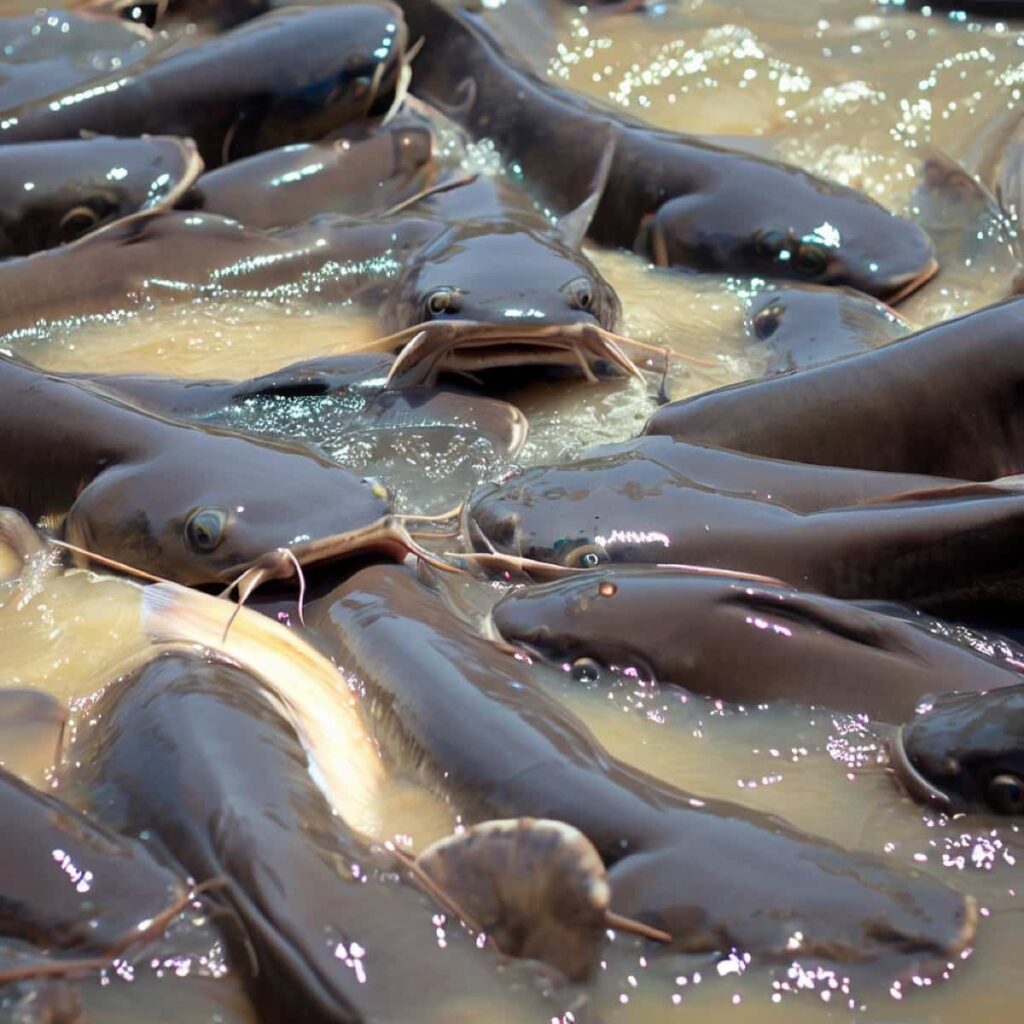
South Africa’s rich water resources make it an ideal location for catfish farming. The warm climate and ample access to freshwater bodies provide optimal catfish growth and reproduction conditions. As a result, many farmers have embraced catfish farming as a viable business opportunity.
Catfish Farming Business Plan: Key Components and Considerations
- First and foremost, your business plan should clearly describe your goals and objectives. This involves researching the demand for catfish in your target market, understanding consumer preferences, and identifying potential competitors.
- Another important consideration is site selection and infrastructure requirements. You’ll need to choose a suitable location for your farm that provides access to clean water sources and has enough space for fish ponds or tanks. Additionally, you’ll need to invest in necessary infrastructure such as filtration systems, oxygenation equipment, and feeding mechanisms.
- Next, it’s crucial to conduct thorough market research. Understanding the demand for catfish in South Africa will allow you to find customers and determine the best strategies for reaching them. Additionally, analyzing competitors can help you differentiate yourself in the market and develop selling propositions.
- Financial projections are another key component of your business plan. This involves estimating expenses such as land acquisition, equipment costs, feed supplies, labor wages, marketing expenses, and other operational costs.
- Don’t forget about sustainability considerations in your business plan. As environmental consciousness grows globally, incorporating sustainable practices into your operations can benefit the environment and enhance brand reputation among consumers who prioritize eco-friendly choices.
Site Selection and Infrastructure Requirements for Catfish Farming
Firstly, you need to find a suitable location for your farm. Ideally, it should be close to a reliable water source, such as a river, as catfish thrive in clean, oxygen-rich water. You will need to construct ponds or tanks for housing the catfish. The size and number of ponds will depend on the scale of your operation.
Additionally, proper fencing is essential to prevent predators from entering the farm and harming the fish. Adequate shade structures should also be provided to protect the fish from extreme temperatures. Water quality monitoring equipment should be installed to maintain optimal conditions for the growth and health of the catfish. Don’t forget the electricity supply for running pumps, aerators, and other necessary equipment. It’s important to have a backup power source in case of outages.
Equipment and Technology for Catfish Farming Operations
The most important piece of equipment is the fish tank or pond. This is where your catfish will live and grow, so choosing a size that can accommodate your desired stock density is essential. Tanks should be made of durable materials like fiberglass or concrete to withstand the weight and movement of the fish. Next, filtration systems are vital for maintaining clean water conditions in your farm.
In case you missed it: Tilapia Fish Farming in South Africa: Business Plan, Cost and Profit Analysis
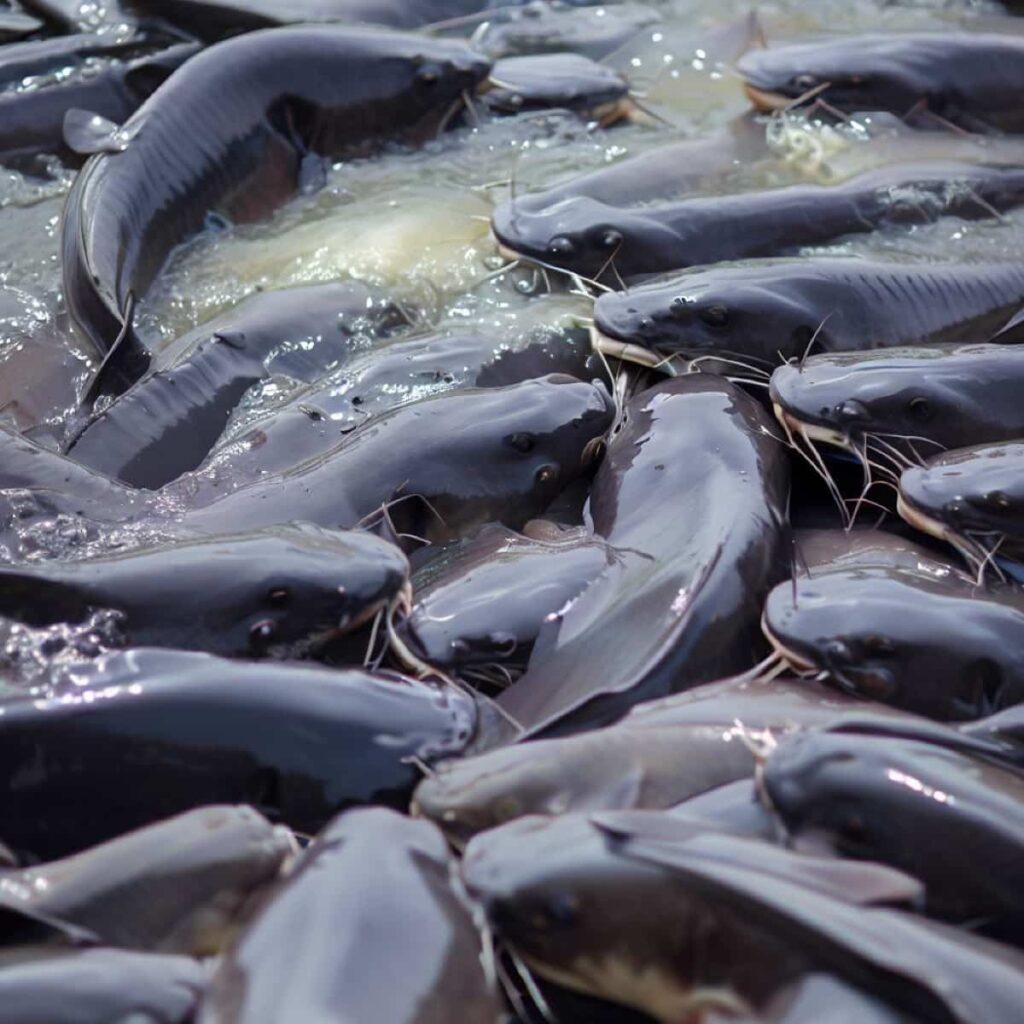
Additionally, oxygenation systems such as aerators ensure sufficient dissolved oxygen levels for healthy fish growth. Feeding automation technology has also revolutionized catfish farming operations. Nets are commonly used to catch mature catfish from ponds or tanks. Investing in modern equipment and technology improves efficiency and helps maximize production output while reducing labor costs associated with manual tasks.
Catfish Breeding and Hatchery Management
Proper breeding techniques are essential for producing healthy and high-quality fingerlings, which are the foundation of any catfish farm. To start with, selecting the right broodstock is vital. Healthy parent fish with desirable traits should be chosen to ensure good genetic diversity and productivity in offspring. These broodstock should be carefully monitored for signs of disease or stress. Once selected, the broodstock needs optimal conditions for spawning.
A controlled environment with proper temperature, lighting, and water quality is necessary to stimulate natural reproductive behaviors. This can be achieved using specialized tanks or ponds equipped with suitable equipment. After successful spawning, the eggs need careful attention during the incubation period. Adequate oxygenation and protection from predators are important factors to consider. The eggs require constant monitoring as they develop into fry that will eventually become fingerlings.
Proper feeding practices also play a crucial role in hatchery management. Effective catfish breeding and hatchery management require knowledge of fish biology and meticulous attention to detail. By implementing best practices in these areas, farmers can ensure a consistent supply of high-quality fingerlings while maintaining sustainability in their production cycle.
Feeding and Nutrition in Catfish Farming
As omnivorous creatures, catfish have a diverse diet of plant and animal-based food sources. A diet is essential for their growth and overall health. In the early stages, newly hatched catfish fry requires smaller feed particles such as powdered commercial feeds or live organisms like brine shrimp. These feeds are specially formulated to meet the nutritional needs of catfish at different stages of development.
Protein is essential in catfish diets as it aids muscle development and growth. Commercial fish feeds typically contain high levels of protein derived from sources like fishmeal, soybean meal, or poultry by-products. Supplements like vitamins and minerals are added to ensure proper nutrient balance. Feeding frequency also plays a vital role in catfish farming. Feeding them multiple times a day while monitoring their appetite closely is recommended.
Water Quality Management in Catfish Farms
Maintaining optimal water conditions ensures proper digestion and nutrient absorption by the fish. Regular testing for pH levels, dissolved oxygen content, ammonia levels, and temperature should be conducted to ensure an ideal environment for healthy growth. Water quality management is a crucial aspect of catfish farming that directly impacts the health and growth of the fish.
In case you missed it: 15 Best Christmas Tree Farms in Maryland: For Central, Southern, and Northern Regions
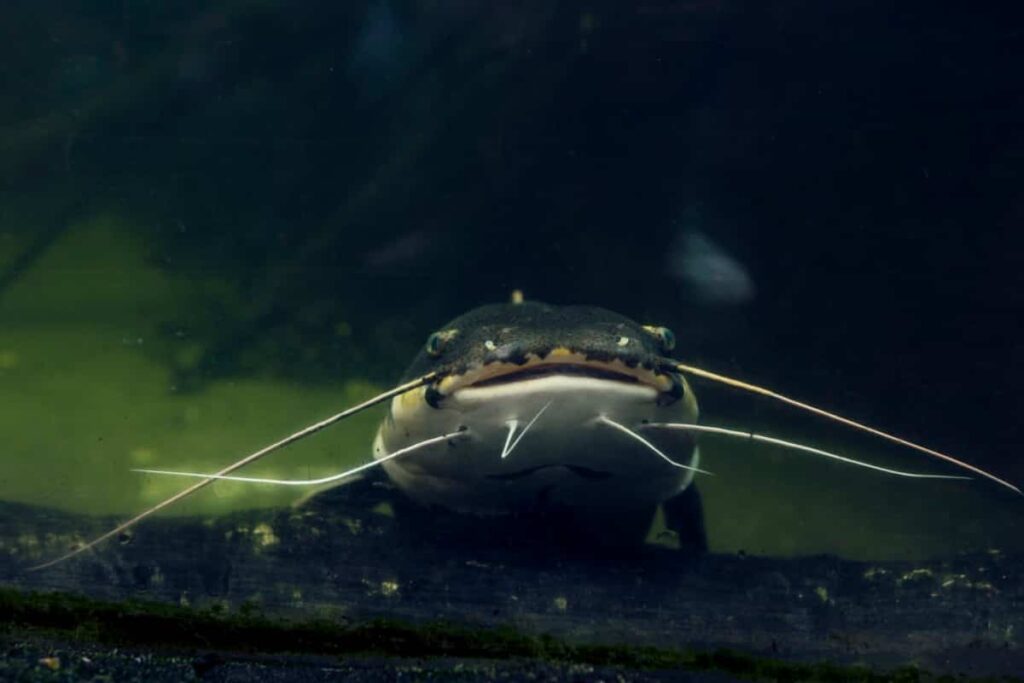
One important factor to consider is the pH level of the water. Catfish prefer slightly acidic to neutral water, with a pH range between 6.5 and 7.5. Regular monitoring of pH levels is necessary to prevent any fluctuations that could negatively affect the fish. Another key parameter to monitor is ammonia levels in the water. Ammonia can accumulate from fish waste and uneaten feed, leading to poor water quality and health problems for the catfish. Adequate filtration systems should be implemented to remove excess ammonia from the tanks or ponds.
Disease Prevention and Management in Catfish Farming
As with any livestock operation, catfish farms can be susceptible to various diseases that can significantly impact the productivity of the fish. To ensure disease prevention, catfish farmers need to implement good biosecurity practices on their farms. Poor water quality can stress the fish and make them more susceptible to diseases.
Regular testing should be done to monitor parameters like pH levels, dissolved oxygen levels, ammonia, nitrate, and nitrite levels. Vaccination is another effective tool in disease prevention for catfish farming. Vaccines help boost the fish’s immune system against common pathogens present in their environment. Prompt diagnosis is vital for effective management if a disease outbreak occurs despite preventive measures. Farmers should work closely with veterinarians who specialize in aquatic animal health.
Treatment options may include using appropriate medications or antibiotics under veterinary guidance. Following dosage instructions carefully and observing withdrawal periods before harvesting the fish is crucial. Monitoring fish behavior and appearance is necessary to detect early signs of illness or distress. Quick action can help prevent further spread of diseases within the farm population.
Harvesting, Processing, and Marketing of Catfish Products
It’s time for the harvest once the catfish have reached their desired size. This is an exciting and crucial step in the catfish farming process. The fish are carefully caught using nets or traps to ensure minimal stress and damage. It’s important to handle them gently to maintain their quality. After harvesting, the next step is processing the catfish products. This involves cleaning and gutting the fish, removing scales, and preparing them for market consumption.
Some farmers may fillet the fish or even smoke them for added flavor. Handling the fish carefully during this process minimizes stress and ensures their quality. After harvesting, the next step is processing the catfish products. This involves cleaning, gutting, and filleting the fish. Depending on market demand, you can sell whole fish or processed fillets. Proper hygiene and sanitation practices are crucial during processing to maintain product safety.
Marketing strategies in catfish farming also include branding efforts such as packaging design and labeling that highlight the quality of your product. Packaging the products plays an important role in attracting customers. It’s also essential to consider pricing strategies that align with market trends while ensuring profitability for your business. Conducting market research and staying updated on consumer preferences will give you insights into pricing decisions.
Market Analysis for Catfish Farming in South Africa
First and foremost is the growing demand for catfish products in the country. With its delicious taste, catfish has become a popular choice among consumers. In terms of competition, while there are already established fish farms in South Africa, there is still room for new entrants. The market demand outweighs current supply levels, creating opportunities for entrepreneurs looking to venture into catfish farming.
In case you missed it: How to Start Vegetable Farming in South Africa: Commercial Business Plan, Cost, and Profit
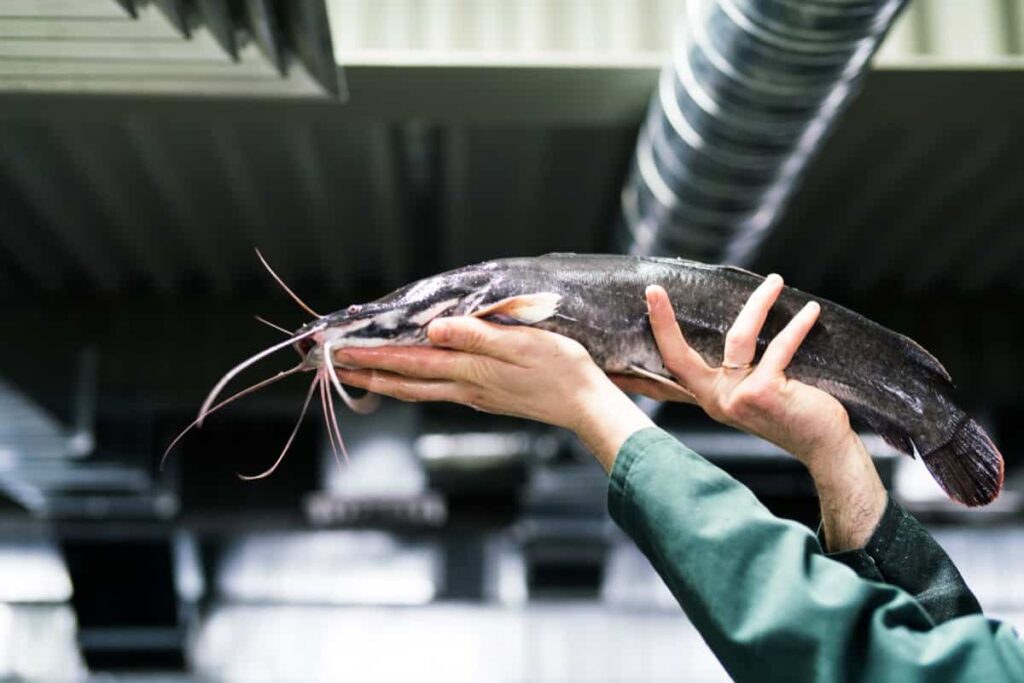
The market analysis also reveals an increasing consumer preference for locally sourced and sustainable food products. Furthermore, the rising health consciousness among consumers has increased the demand for protein-rich foods like fish. However, it’s important to note that success in this industry requires thorough research and understanding of consumer preferences.
Market trends indicate an increasing preference for organic and sustainably produced fish products. Building partnerships with wholesalers or participating in farmers’ markets could also help expand your customer base. Conducting a comprehensive market analysis before starting your catfish farming business will provide valuable insights into potential growth opportunities and consumer demands.
Financial Analysis and Cost Estimation for Catfish Farming
The initial setup investment required will depend on the scale of your operation. Setting up ponds or tanks, purchasing fingerlings (young fish), feed, and equipment, and securing suitable land can incur significant costs. It is essential to assess your budget and seek financing options if needed. Starting a catfish farming business costs between 20,000 and 50,000 Rands, depending on the fish variety you want to establish.
Profit Potential and Return on Investment in Catfish Farming
Catfish generally reach market size within 6-8 months, allowing farmers to generate revenue quickly. This fast turnaround time enables them to reinvest capital into expanding operations or exploring new markets. Moreover, the low feed conversion ratio of catfish makes it cost-effective regarding input costs such as feed expenses.
The profitability of catfish farming lies in its ability to meet the ever-increasing demand for fish products in South Africa. The country relies heavily on imported fish products, allowing local catfish farmers to fill this gap and generate significant profits. In addition to meeting local demand, exporting catfish products presents an excellent opportunity for increased revenue.
Many countries worldwide have a high demand for quality seafood products, making it possible for catfish farmers in South Africa to tap into international markets. Furthermore, farmers can command higher prices and increase their profit margins with the right marketing strategies and value-added processing techniques, such as smoked or filleted catfish products.
Risk Assessment and Mitigation Strategies for Catfish Farms
One of the key areas to focus on is biosecurity measures. This involves implementing strict protocols to prevent the introduction and spread of diseases on your farm. Regular health checks, quarantine procedures for new fish, and adequate water quality are essential to minimizing disease outbreaks. Another important aspect is ensuring a reliable source of feed for your catfish. Additionally, investing in quality feed that meets the nutritional requirements of your fish will promote their growth and overall health.
Proper infrastructure maintenance is crucial to avoid accidents or structural failures that could harm the fish and workers. Environmental factors such as extreme weather conditions also pose risks to catfish farms. Protective measures like building strong fencing against predators or providing shade structures during hot summers can help safeguard your operation from these external threats.
Government Regulations and Licensing for Catfish Farming in South Africa
These regulations are put in place to ensure the safety and sustainability of the industry and protect consumers. One of the first steps is obtaining a permit or license to operate a catfish farm. This involves submitting an application, providing necessary documentation such as ownership proof or lease land agreement, and paying associated fees.
The specific requirements can change depending on your location within South Africa. In addition to obtaining a permit, farmers must comply with various regulations related to water quality management, waste disposal, and disease prevention. This includes regular monitoring of water parameters such as temperature and oxygen levels, implementing proper waste management practices, and following strict biosecurity measures.
In case you missed it: South Africa Vegetable Planting Calendar: Month Wise, Schedule, Chart, and Guide
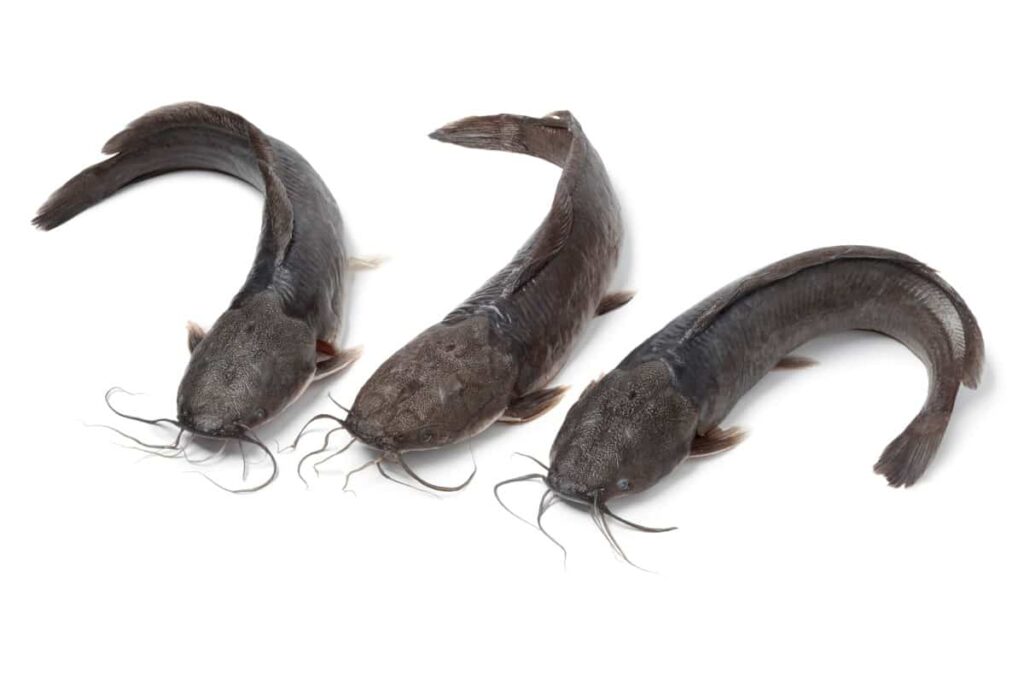
Furthermore, farmers may need to adhere to guidelines regarding stocking densities (the number of fish per unit area), feeding practices (to prevent overfeeding), and harvesting techniques (to minimize stress on fish). Regular inspections by regulatory authorities may also be conducted to ensure compliance with these guidelines.
Sustainability and Environmental Considerations in Catfish Farming
One main aspect of sustainable catfish farming is water management. Proper monitoring and maintenance of water quality are essential to ensure optimal growth and health of the fish. Implementing efficient filtration systems and regular testing can help prevent pollution and maintain a healthy aquatic environment. Another important consideration is feed sourcing. Choose high-quality feeds that are nutritionally balanced while minimizing waste production.
Using sustainable feed ingredients such as plant-based proteins can reduce reliance on wild-caught fish stocks and contribute to long-term ecological balance. Sustainable fishing techniques, such as selective harvesting, can help protect biodiversity while meeting market demand. Additionally, implementing waste management strategies is vital for maintaining an environmentally friendly operation.
In case you missed it: Catfish Farming in the Philippines: A Profitable Comprehensive Guide
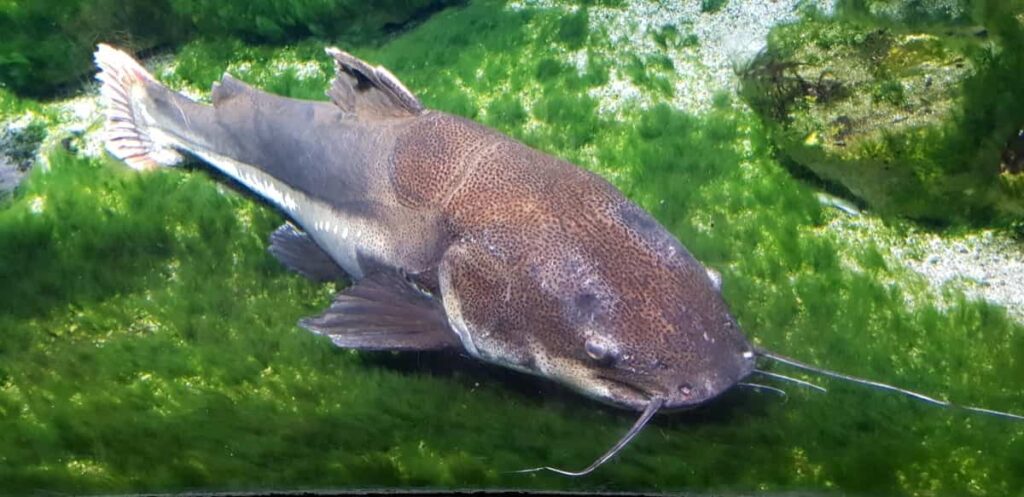
Conclusion
Catfish farming is the practice of rearing and cultivating catfish for commercial purposes. This industry has gained significant attention in South Africa due to its potential for profitability and sustainability. Catfish farming presents an exciting opportunity within the agriculture sector in South Africa. Catfish farming offers a multitude of benefits for farmers and the wider community. It is a highly profitable venture that can provide a sustainable source of income.
- Sheep Farming Business Plan for Beginners
- Aquaponic Farming at Home: A Step-By-Step Guide
- Profitable Village Farming Business Ideas in 2024
- High-Yield Aquaculture: Fast-Growing Fish for Farming
- Effective Fish Pond Construction Techniques for Beginners
- Irrigation and Water Management in Pineapple Farming
- Blossom to Harvest: Mastering Flowering and Pollination in Papaya Farming
- Pig Fattening Essentials: From Selection to Sale for Beginners
- Raising Wagyu Cattle: A Complete Guide for Premium Beef Production
